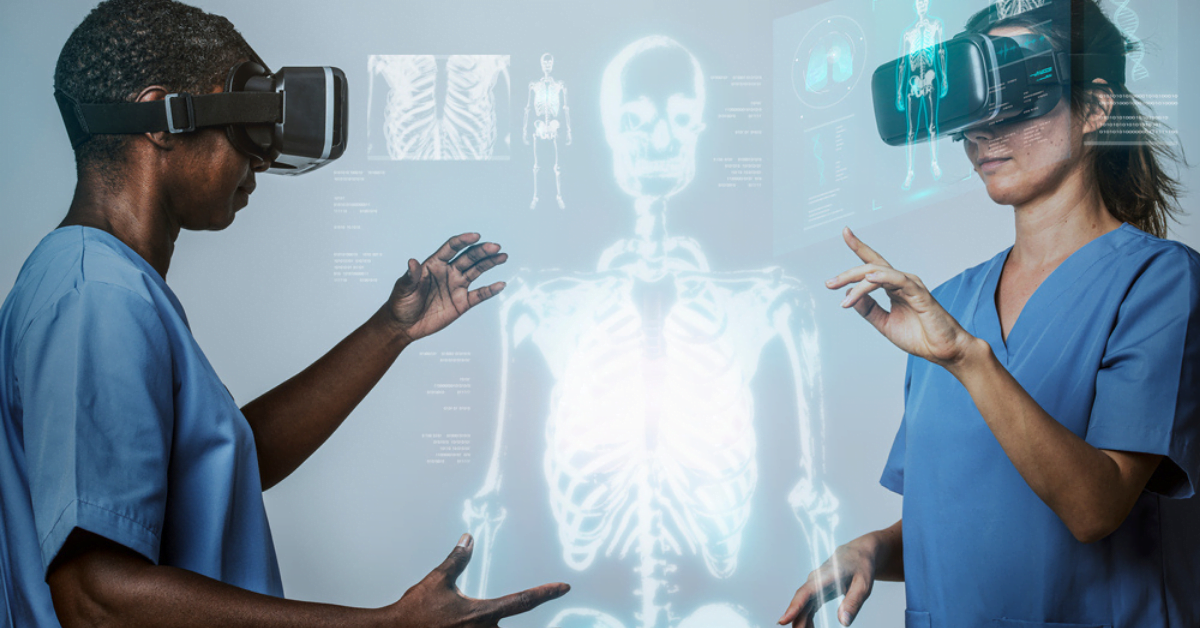Immersive virtual reality (VR) is a powerful new technology that is transforming the way we live and work. VR has also emerged as a promising tool for the treatment of chronic illness.
Key highlights:
- Immersive VR can be used to provide pain relief and distraction during medical procedures.
- VR can also be used to help patients manage chronic pain conditions such as arthritis, cancer pain, and fibromyalgia.
- VR can help patients with mental health conditions such as anxiety, depression, and PTSD.
- VR can also be used to help patients with neurological conditions such as multiple sclerosis and Parkinson’s disease.
VR works by creating a simulated environment that users can interact with and be fully immersed in. This is typically done using a VR headset and controllers. VR headsets block out the user’s real-world surroundings and replace them with a virtual environment.
VR has a number of potential benefits for patients with chronic illness. For one, VR can be used to provide pain relief and distraction during medical procedures. VR can also be used to help patients manage chronic pain conditions such as arthritis, cancer pain, and fibromyalgia.
In addition, VR can help patients with mental health conditions such as anxiety, depression, and PTSD. VR can also be used to help patients with neurological conditions such as multiple sclerosis and Parkinson’s disease.
VR for pain management:
One of the most promising applications of VR is for pain management. VR can be used to distract patients from pain and provide a sense of calm and relaxation. This can be especially helpful during painful medical procedures such as surgery or physical therapy.
For example, a study published in the journal Pain found that VR was able to reduce pain and anxiety in children undergoing burn wound care. Another study, published in the journal Anesthesiology, found that VR was able to reduce pain and anxiety in adults undergoing spinal anesthesia.
VR for chronic pain conditions:
VR can also be used to help patients manage chronic pain conditions such as arthritis, cancer pain, and fibromyalgia. VR can help patients to distract themselves from pain, learn relaxation techniques, and even improve their physical function.
For example, a study published in the journal Arthritis & Rheumatology found that VR was able to reduce pain and improve function in patients with rheumatoid arthritis. Another study, published in the journal Pain Medicine, found that VR was able to reduce pain and improve quality of life in patients with cancer pain.
VR for mental health conditions:
VR can also be used to help patients with mental health conditions such as anxiety, depression, and PTSD. VR can help patients to expose themselves to their fears in a safe and controlled environment, learn coping mechanisms, and even improve their social skills.
For example, a study published in the journal The Lancet Psychiatry found that VR was able to reduce symptoms of PTSD in veterans. Another study, published in the journal Depression and Anxiety, found that VR was able to reduce symptoms of depression in adults.
VR for neurological conditions:
VR can also be used to help patients with neurological conditions such as multiple sclerosis and Parkinson’s disease. VR can help patients to improve their balance, coordination, and cognitive function.
For example, a study published in the journal Multiple Sclerosis found that VR was able to improve balance and walking in patients with multiple sclerosis. Another study, published in the journal Neurorehabilitation and Neural Repair, found that VR was able to improve cognitive function in patients with Parkinson’s disease.
As VR becomes more affordable and accessible, researchers are developing new and innovative ways to use VR to help patients. In the future, VR could play a major role in the treatment and management of chronic illness.
